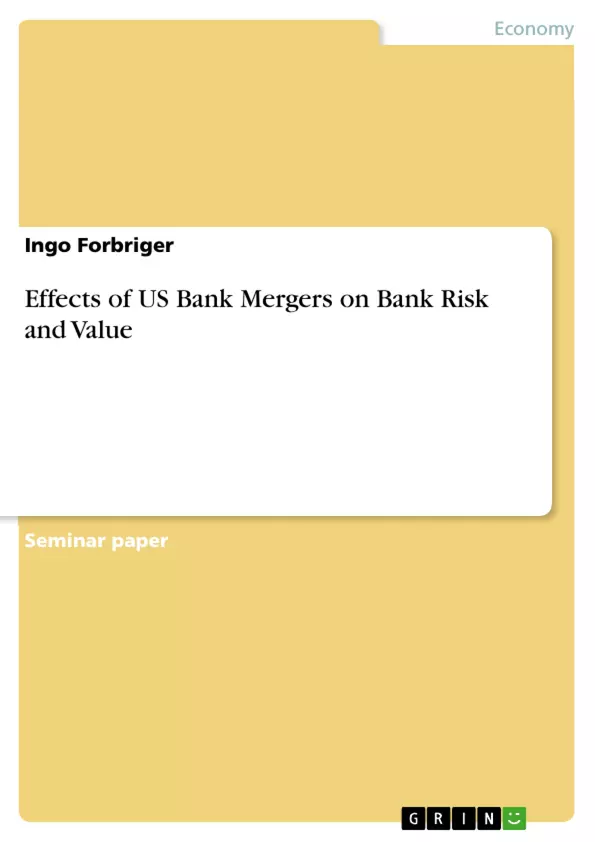This paper observes the impacts of domestic US commercial bank M&As in the 1990s on individual institutions. It shows potential changes in a bank’s risk exposure and how these can affect a merged bank’s value. It provides a theoretical consideration as well as a review of empirical studies. The result is that a merger might lead to a risk benefit. In this case, there is, c.p., potential for a value increase. Empirically, risk benefits were either absent or offset by managers’ higher risk taking.
Inhaltsverzeichnis (Table of Contents)
- Introduction
- Theoretical considerations
- Potential risk effects of bank mergers
- Risk effects of geographic and product diversification
- The link between risk and value
- Further sources of potential value gains
- Empirical evidence
- The Z-Score as a measure for the analysis of risk effects of bank mergers
- Evidence on risk effects of US bank mergers
- Direct risk effects of US bank acquisitions
- The relationship between bank risk and size
- Testing the “diversification hypothesis”
- Comparison of the reviewed studies' results
- Potential impacts of diversification on value
- Conclusion
Zielsetzung und Themenschwerpunkte (Objectives and Key Themes)
This paper examines the impacts of US commercial bank mergers and acquisitions (M&As) in the 1990s on individual institutions. The main focus is on potential changes in a bank's risk exposure and how these changes can affect a merged bank's value.- Potential risk effects of bank mergers
- The link between risk and value
- Risk effects of geographic and product diversification
- Empirical evidence on risk effects of US bank mergers
- Potential impacts of diversification on value
Zusammenfassung der Kapitel (Chapter Summaries)
- Introduction: This chapter introduces the history of banking deregulation in the US and the resulting wave of bank mergers. It highlights the implications of this consolidation, particularly regarding financial risk and systemic risk.
- Theoretical considerations: This chapter explores theoretical considerations regarding potential risk changes following bank mergers. It focuses on the potential benefits from diversification, while also discussing other factors such as managerial efficiencies, operating risk, and market power rents.
- Empirical evidence: This chapter reviews empirical research on US bank consolidation, focusing on the 1990s. It introduces the Z-score as a measure of insolvency risk exposure and discusses studies that provide insights into the risk effects of US bank mergers.
Schlüsselwörter (Keywords)
This paper examines the impact of US bank mergers on financial risk and value. It focuses on key concepts such as risk exposure, diversification, geographic and product diversification, and the Z-score as a measure of insolvency risk. The research also considers the relationship between bank risk and size, and the implications of diversification for value creation.
Excerpt out of 33 pages
- scroll top
- Quote paper
- Ingo Forbriger (Author), 2006, Effects of US Bank Mergers on Bank Risk and Value, Munich, GRIN Verlag, https://www.hausarbeiten.de/document/61630
Look inside the ebook


